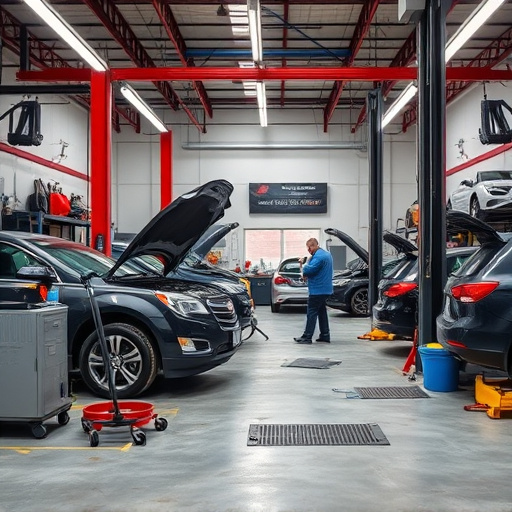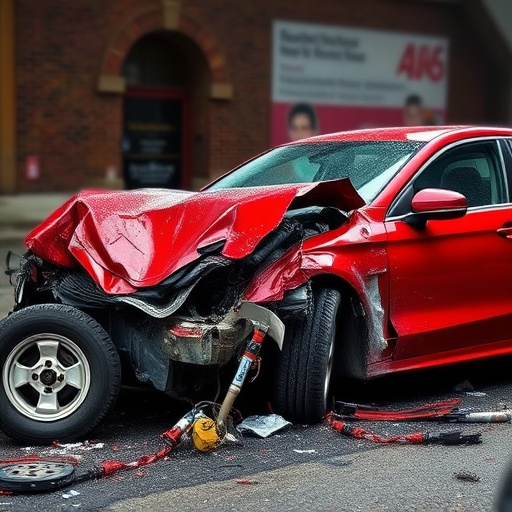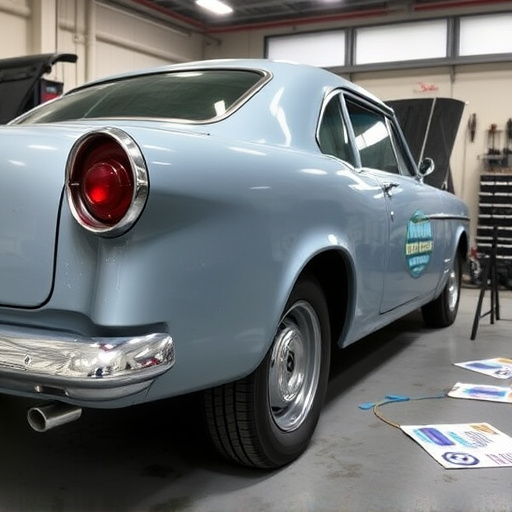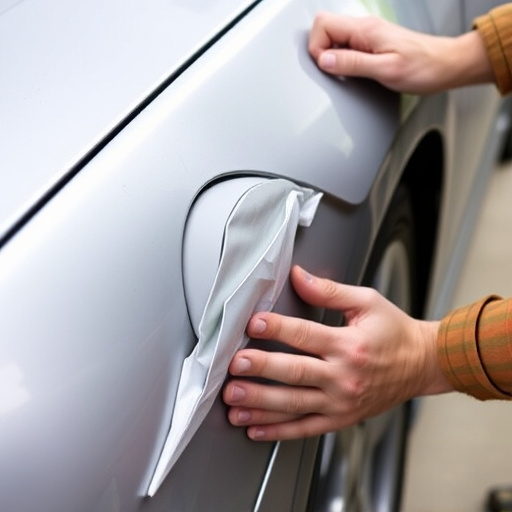TL;DR:
Tesla charging port issues caused by wear and harsh environments impact vehicle performance and safety. Regular inspections by owners in extreme climates are vital. Repairs should be entrusted to trained professionals using Original Equipment Manufacturer (OEM) parts and guidelines for precise alignment, seamless integration, and reliability. This ensures optimal charging efficiency, prevents short circuits, and extends the life of a crucial component, enhancing overall vehicle value. A meticulous step-by-step process involving safety protocols, damage assessment, specific part gathering, disassembly, repair/replacement, reassembly, and rigorous testing guarantees secure Tesla charging port repairs.
Tesla vehicles are renowned for their innovative technology, but like any car, they face specific maintenance challenges. One such issue is a faulty charging port, crucial for efficient electricity flow to power these electric cars. This article delves into understanding common Tesla charging port problems and their impact on daily driving. We highlight the significance of adhering to Original Equipment Manufacturer (OEM) specifications during repairs for guaranteed reliability. Additionally, we provide a comprehensive step-by-step guide to help owners effectively tackle this task.
- Understanding Tesla Charging Port Issues and Their Impact
- The Importance of Following OEM Specifications for Repair
- Step-by-Step Guide to Effective Tesla Charging Port Repair
Understanding Tesla Charging Port Issues and Their Impact

Tesla charging port issues can arise from daily use or exposure to harsh environmental conditions. These ports are integral to the vehicle’s functionality, enabling efficient charging and powering essential systems. When problems occur, it’s crucial to address them promptly to avoid further damage and maintain optimal vehicle performance. Issues like loose connections, cracks, or wear and tear not only impact charging efficiency but can also pose potential safety hazards.
Proper understanding of these issues is the first step towards effective repair. Tesla owners must be vigilant about regular inspection, especially in regions with extreme weather conditions. Repairs should always adhere to Original Equipment Manufacturer (OEM) specifications for guaranteed longevity and safety. Considering the intricate design of modern vehicles, including car body restoration, bumper repair, or fender repair, it’s best to leave complex repairs to trained professionals who can accurately diagnose and fix Tesla charging port problems while ensuring seamless integration with the vehicle’s overall system.
The Importance of Following OEM Specifications for Repair
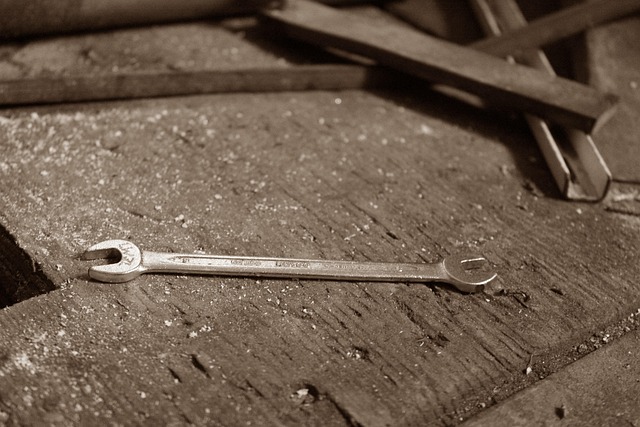
When it comes to repairing a Tesla charging port, adhering to Original Equipment Manufacturer (OEM) specifications is paramount. These specifications ensure that the repair not only maintains the vehicle’s original performance but also guarantees its safety and reliability. Using OEM parts and following the manufacturer’s guidelines for assembly and installation is crucial because it allows for precise alignment and seamless integration with the rest of the electric vehicle’s systems.
Deviating from these standards could lead to potential issues, such as inconsistent charging speeds or even short circuits. An auto collision center or a specialized auto bodywork shop that understands Tesla charging port repair will have access to the necessary tools, training, and OEM resources to make accurate repairs. This ensures not just an effective fix but also extends the life of your vehicle’s crucial charging component, enhancing its overall performance and value in the process.
Step-by-Step Guide to Effective Tesla Charging Port Repair
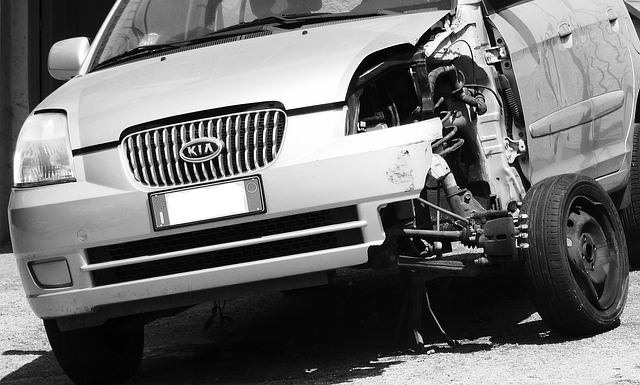
Repairing a Tesla charging port requires precision and adherence to original equipment manufacturer (OEM) standards. Here’s a step-by-step guide for an effective Tesla charging port repair, ensuring optimal performance and safety.
1. Safety First: Begin by disconnecting the vehicle from any power sources. Grounding is crucial to prevent electrical hazards during the repair process. Use insulated tools throughout to maintain safety.
2. Inspect and Assess: Examine the charging port thoroughly for damage, including cracks, fractures, or loose connections. Identify the specific issue – whether it’s a broken connector, damaged cables, or corroded parts – before proceeding with the repair.
3. Gather Materials: Procure replacement parts that strictly adhere to Tesla’s OEM specifications. This ensures compatibility and optimal performance. Necessary tools include wire strippers, heat guns (for softening solder), and precision screwdrivers specific to Teslas.
4. Demontage: Carefully disassemble the charging port, following the reverse path of installation. Use a screwdriver to loosen screws securing the port and carefully pull it out of the car body shop.
5. Repair or Replace: Depending on the damage, either repair the existing components or replace them with new parts. Solder any broken connections meticulously, ensuring a strong and reliable bond. For severe damage, such as a cracked port, replacement is recommended to maintain safety and functionality.
6. Reassembly: Once repairs or replacements are complete, reassemble the charging port in reverse order of disassembly. Ensure all screws are securely fastened.
7. Testing: After finishing the auto frame repair, perform thorough testing. Plug in a compatible device to verify proper charging function and check for any abnormal electrical readings.
When undertaking a Tesla charging port repair, adhering to original equipment manufacturer (OEM) specifications is paramount. This ensures not only the longevity of your vehicle’s charging system but also guarantees compatibility and safety. By following a meticulous step-by-step guide and prioritizing OEM standards, you can effectively resolve charging port issues, ensuring your Tesla remains in top form for years to come. Remember, proper repair techniques and materials are key to preserving the integrity of your electric vehicle’s crucial charging component.


